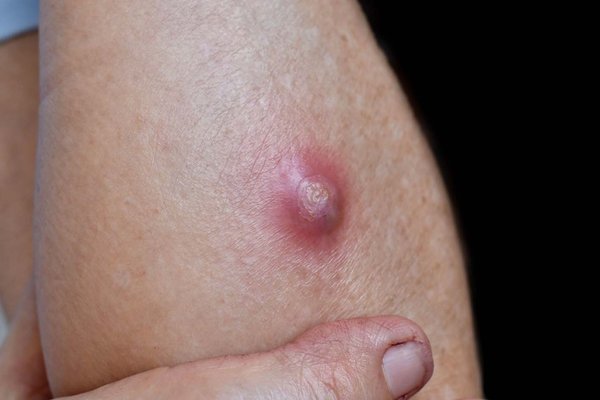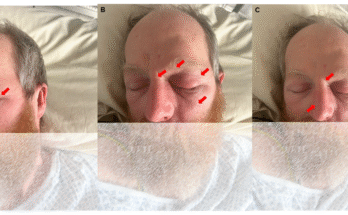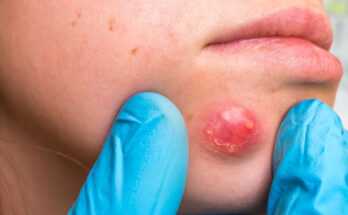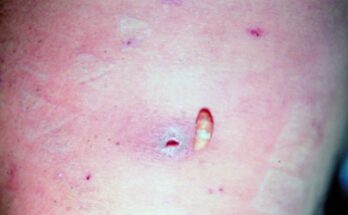Skin problems are more common than many people think, and one of the most painful among them is an abscess or infected boil. The picture above shows a severe case where pus has built up under the skin, creating a swollen, red, and painful lump. This happens when bacteria, most often Staphylococcus aureus, invade the skin through a cut, hair follicle, or blocked oil gland. The body’s immune system responds to the infection, and pus—made of white blood cells, dead skin tissue, and bacteria—begins to collect.
At first, boils may start as a small red bump, similar to a pimple. Over time, they become larger, harder, and more painful as the infection spreads deeper. The area often looks swollen and shiny, with a yellow or white tip where the pus is trying to escape. In untreated cases, like the one shown in the image, multiple openings can form, releasing pus and even creating dead tissue around the infection site.
The main risk factors for developing skin abscesses include poor hygiene, weakened immunity, diabetes, or living in close contact with others who carry staph bacteria. Even stress and lack of sleep can make the body more vulnerable to infections. People who shave frequently or sweat a lot are also at higher risk because bacteria can easily enter through tiny cuts or clogged pores.
Treatment usually depends on how serious the infection is. Small boils may heal on their own with warm compresses, which improve blood circulation and help the pus come to the surface. However, larger abscesses, like the one shown above, often need medical treatment. Doctors may cut open the abscess in a safe and sterile way to drain the pus, sometimes followed by antibiotics to fight the infection. It’s important not to squeeze or pop a boil at home, as this can push bacteria deeper into the skin or spread it to other areas.
If left untreated, abscesses can lead to serious complications. The infection may spread to nearby tissues, a condition known as cellulitis, or even enter the bloodstream, which is life-threatening. That’s why medical attention is always recommended for boils that are very large, painful, or keep coming back.
In conclusion, while skin abscesses and boils may seem like minor problems at first, they should never be ignored. Good personal hygiene, proper wound care, and a healthy lifestyle can prevent most cases. But when an infection does occur, timely treatment is the best way to avoid pain and complications. Taking care of your skin is not just about appearance—it’s about protecting your health.



